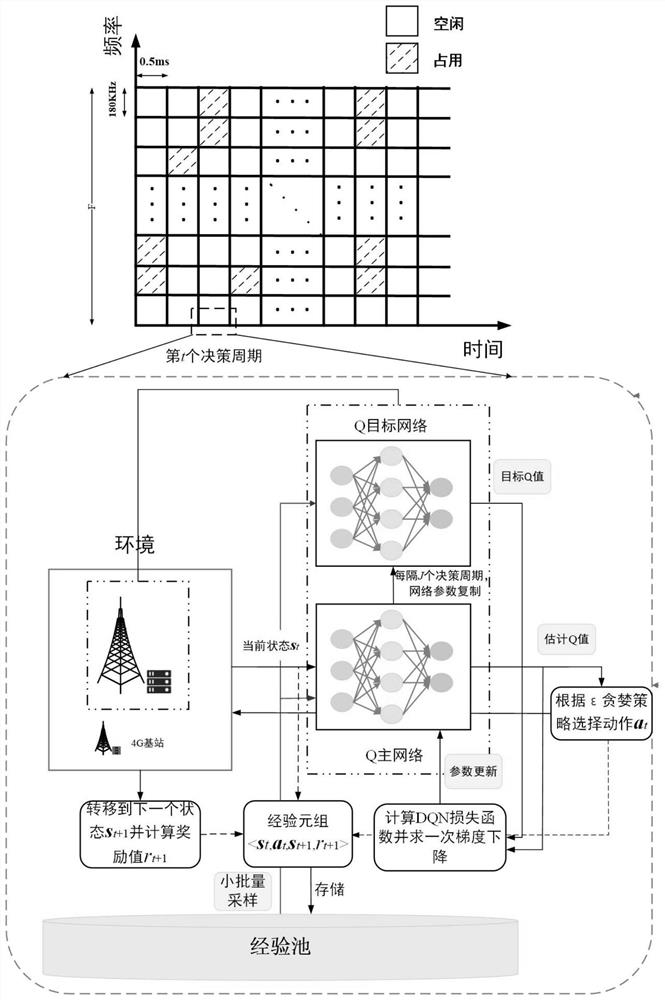Dynamic spectrum sharing method between 4G and 5G networks based on deep reinforcement learning
A technology of reinforcement learning and dynamic spectrum, applied in the field of mobile communication, can solve the problems of channel capacity loss, reduce the network speed of 4G users, complexity and delay, etc., so as to avoid intolerable delay, improve the efficiency of spectrum utilization, and overcome the waste of frequency band resources Effect
- Summary
- Abstract
- Description
- Claims
- Application Information
AI Technical Summary
Problems solved by technology
Method used
Image
Examples
Embodiment Construction
[0027] The specific implementation manners of the present invention will be further described below in conjunction with the technical solutions.
[0028] Considering the cellular network area covered by a 4G base station, the entire area is divided into 4 sub-areas. According to the LTE standard, the time domain duration of a resource block is 0.5ms, and the bandwidth is 180KHz. The duration corresponding to each resource block is the decision period. Considering that the available bandwidth of LTE is 20MHz, and there are 1MHz bandwidth guard bands on the left and right sides, therefore, the number of resource blocks that can be scheduled by the base station in each decision period is 100.
[0029] figure 1 The entire workflow is represented, and the specific steps are as follows:
[0030] The base station will first build two neural networks with the same structure, namely the Q main network with network parameters θ and the network parameter Q target network, and initia...
PUM
 Login to View More
Login to View More Abstract
Description
Claims
Application Information
 Login to View More
Login to View More - R&D
- Intellectual Property
- Life Sciences
- Materials
- Tech Scout
- Unparalleled Data Quality
- Higher Quality Content
- 60% Fewer Hallucinations
Browse by: Latest US Patents, China's latest patents, Technical Efficacy Thesaurus, Application Domain, Technology Topic, Popular Technical Reports.
© 2025 PatSnap. All rights reserved.Legal|Privacy policy|Modern Slavery Act Transparency Statement|Sitemap|About US| Contact US: help@patsnap.com



